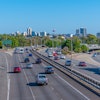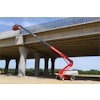When a child receives a near-failing grade on a report card, it tends to make most of us sit up and take notice. Yet, poor grades seem to have produced little reaction' or results'when it comes to our national infrastructure.
In 2001, the American Society of Civil Engineers (ASCE) assigned a cumulative grade of D+ for the condition of the country's roads, bridges, drinking water systems and other public works. Rather than spark improvements, the 2005 Report Card for America's Infrastructure shows the overall grade has dropped to a D, with some areas actually sliding toward failing grades.
Despite minor improvements in aviation and schools, overall conditions remain the same for bridges, dams and solid waste, and have worsened for roads, drinking water, transit, wastewater, hazardous waste and navigable waterways. Following are some of the most relevant findings:
"Given the projected growth in the U.S. economy and population, vehicle miles traveled and number of licensed drivers on the nation's transportation network in the future, a failing grade is likely on the next report card unless action is taken soon to address this growing problem," predicts Pete Ruane, president and CEO of the American Road & Transportation Builders Association.
Addressing such problems will require a long-term investment in not just repair, but growth in infrastructure capacity. The ASCE estimates an investment need of $1.6 trillion over a five-year period from all levels of government and the private sector.
To find out how individual states fared in the ASCE study, go to www.asce.org/reportcard. To contact your state and federal lawmakers to express your views on the report, visit www.congress.org.










![Hcm Ax Landcros Dual Branded Logo[25]](https://img.forconstructionpros.com/mindful/acbm/workspaces/default/uploads/2025/11/hcmaxlandcros-dual-branded-logo25.Qhg3vUCjoK.jpg?ar=16%3A9&auto=format%2Ccompress&bg=fff&fill-color=fff&fit=fill&h=135&q=70&w=240)




